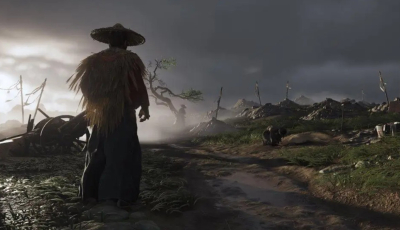Ghost of Tsushima Review


Embark on an evocative journey through the striking landscapes of feudal Japan in Sucker Punch's Ghost of Tsushima. This title is a masterclass in environmental storytelling that encapsulates the beauty and brutality of samurai warfare. Set during the harrowing Mongol invasion of 1274, players assume the role of Jin Sakai, a samurai on a quest to protect his homeland, Tsushima. With heart-pounding combat and a rich narrative, Ghost of Tsushima offers an unforgettable gaming experience.
Gameplay Dynamics: The Art of Samurai Combat
The combat system in Ghost of Tsushima is a culmination of inspiration from iconic titles and the samurai cinema genre. It's intuitive yet deep, offering a balance between light and heavy attacks, defensive maneuvers, and a seamless transition between different stances tailored to enemy types. The inclusion of stances adds a strategic layer, challenging players to adapt quickly to changing combat situations. As players progress, they acquire new techniques to overcome more formidable foes.
A compelling aspect of the game is the absence of traditional level-based progression. Instead, the game rewards skill improvement and mastery of techniques. Upgrades grant new combat abilities, like countering previously unblockable moves or evoking fear in adversaries after a flawlessly timed parry. This approach ensures that enhancements feel meaningful and directly linked to the player's growing expertise as a warrior.
The Beauty of Tsushima: Graphics and Audio Excellence
Each frame of Ghost of Tsushima is a painting brought to life, offering landscapes that are as devastatingly beautiful as they are varied. The game honors the elegance of Akira Kurosawa's films, especially through its Kurosawa Mode, which imitates the aesthetic of classic cinema with a monochromatic filter. While this mode is not recommended for the entire playthrough due to color-dependent quests, it adds a layer of artistic homage that enhances the overall experience. Complementing the visuals, the game's score elevates each scene with traditional Japanese instruments that respond dynamically to the gameplay.
Features and Flexibility: Play Your Way
Although falling short in its stealth mechanics, where enemy AI can appear simplistic in their reactions, Ghost of Tsushima still affords flexibility in approach. Players may find themselves deftly navigating rooftops or tall grass to silently take down targets. The game introduces a variety of tools and gadgets over time, allowing for an expansion in tactical approaches during confrontations. From the swift throw of a kunai to deftly placed shots from a bow, the game fosters varied combat styles and strategies.
Conclusion: A Landscape Worth Exploring
Ghost of Tsushima is an engaging portrayal of a samurai's struggle amidst invasion and personal conflict. The journey may have its occasional shortcomings, particularly with stealth elements, but it stands strong with its exceptional combat, breathtaking visuals, and dynamic music. This is a game not only for those with a fascination for Japan's age of samurai but for anyone seeking a deep and enriching open-world experience.





























